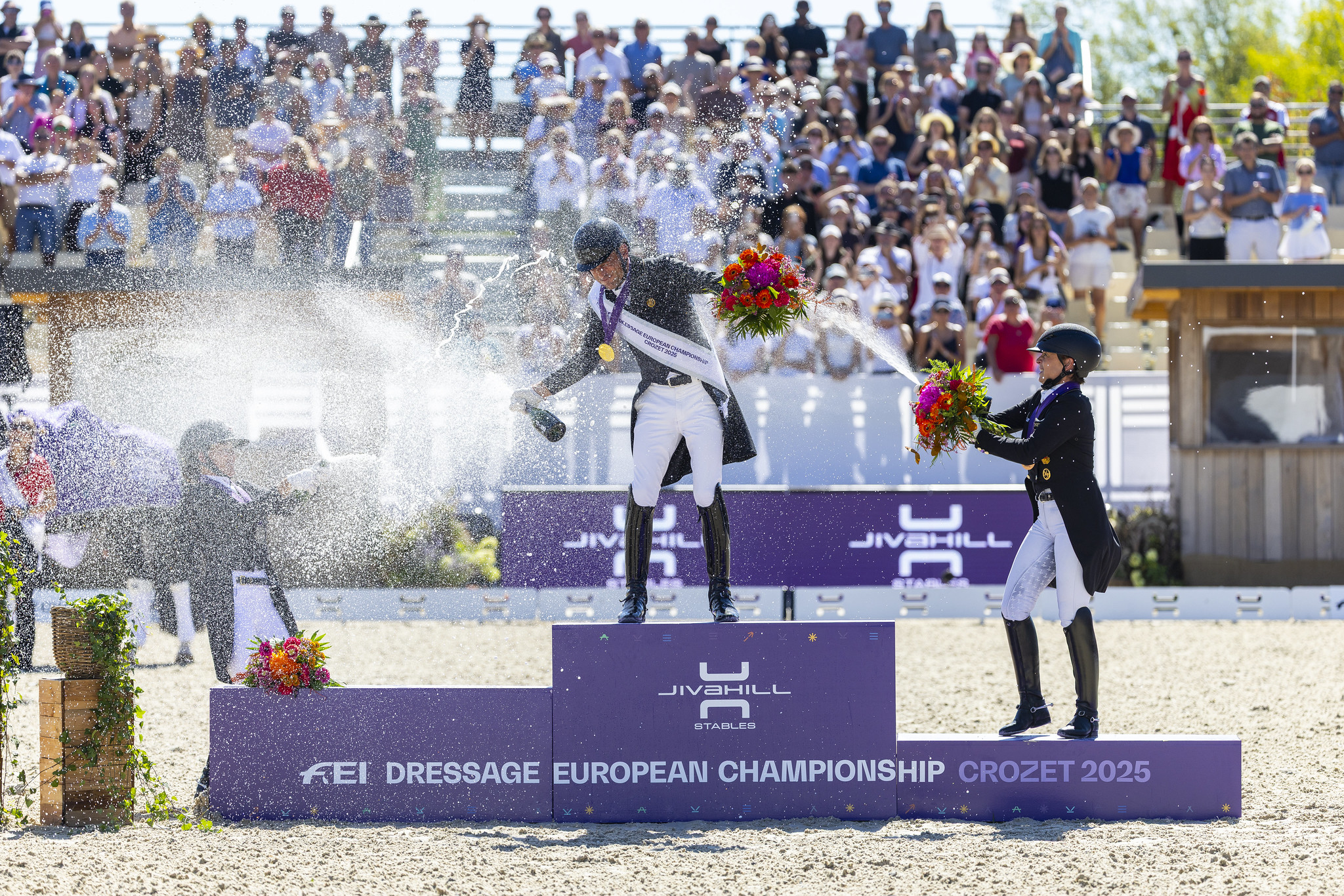"Dressage" is a French word that roughly translates as "training" - the basic training of all riding horses (and other animals, for that matter). Dressage and horse riding are among the world's oldest sporting activities.
Show jumpers, Eventers, show hacks and pleasure horses all benefit from dressage training (often called "flat work"). Dressage training creates a horse that is more comfortable, safe and easy to ride.
In competitive dressage, riders progress through of tests of ever increasing difficulty. Each test is a set routine of movements designed to show the suppleness, obedience and strength of the horse. Judges award marks for the quality and precision of the performance and also give collective marks for horse and rider.
Horses for official competition must exceed 149 cms, be 3 years of age or over, registered with the EA and have a current performance card. There are no restrictions on breeds.
Official dressage requires a rider to be at least twelve (12) years of age and a member of the EA. Rider must be at least ten (10) years and over to compete in Pony Dressage. Dressage riders come in all shapes and sizes and male and female riders compete on equal terms.
For a more detailed overview, go to the Equestrian Australia website
How to get started in dressage
The Object and General Principles of Dressage (from the FEI Rules for Dressage Events)
The object of dressage is the harmonious development of the physique and ability of the horse. As a result it makes the horse calm, supple, loose and flexible, but also confident, attentive and keen, thus achieving perfect understanding with the rider.
These qualities are revealed by:
- The freedom and regularity of the paces
- The harmony, lightness and ease of the movements
- The lightness of the forehand and the engagement of the hind quarters, originating in a lively impulsion
- The acceptance of the bridle with submissiveness throughout and without any tenseness or resistance.
The horse thus gives the impression of doing of its own accord what is required of it. Confident and attentive the horse submits generously to the control of the rider, remaining absolutely straight in any movement on a straight line and bending accordingly when moving on curved lines.
The walk is regular, free and unconstrained. The trot is free, supple, regular, sustained and active. The canter is united, light and cadenced. The quarters are never inactive or sluggish. They respond to the slightest indication of the rider and thereby give life and spirit to all the rest of the body.
By virtue of a lively impulsion with the suppleness of the joints, free from the paralysing effects of resistance, the horse obeys willingly and without hesitation and responds to the various aids calmly and with precision, displaying a natural axial harmonious balance both physically and mentally.
In all the work, even at the halt, the horse must be on the bit. A horse is said to be on the bit when the neck is more or less raised and arched according to the stage of training and extension or collection of the pace, and the horse accepts the bridle with a light and soft contact and submissiveness throughout. The head should remain in a steady position, as a rule slightly in front of the vertical, with a supple poll as the highest point of the neck, and no resistance should be offered to the rider.
Cadence is a result of the proper harmony that a horse shows when it moves with well marked regularity, impulsion and balance. The rhythm that a horse maintains in all the paces is an integral part of the exercises and in the variations of the pace.

